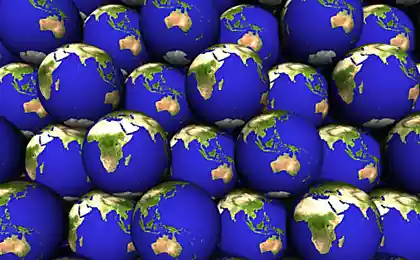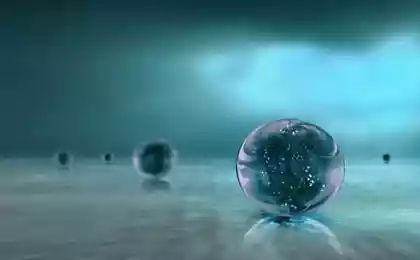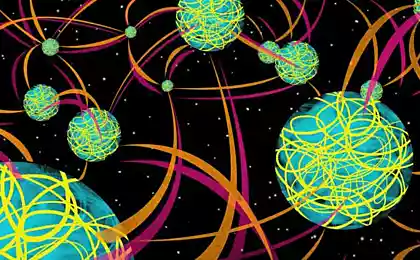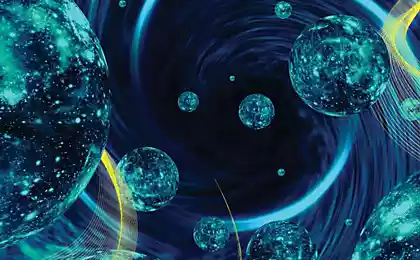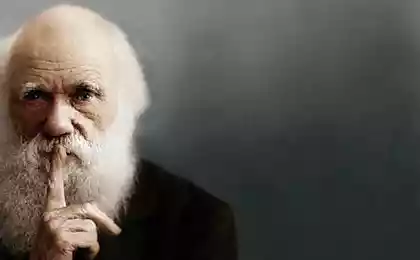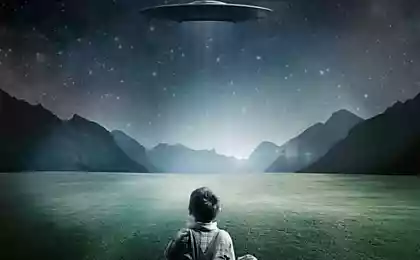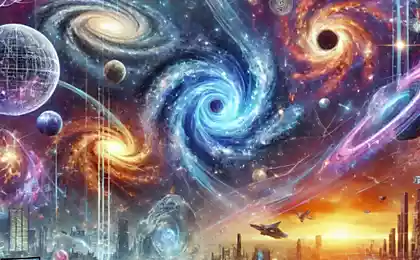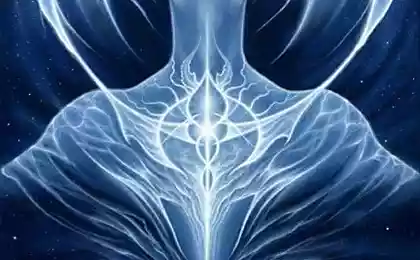690
20 photo evidence proving that we are living in a wonderful of worlds
If these phenomena existed on other planets and were familiar to us only from the descriptions, it would have been hard to imagine. But we, in the world we live among such wonders. In these pictures Editorial can watch endlessly ... Enjoy with us! < 1. «fluttered goat on a branch ..." Such grazing on trees - the most common pattern in Moroccan Berber villages. Goat whole herds climb argan fruits and regale her, deftly balancing on the very top of the crown. This sight always amazes tourists.
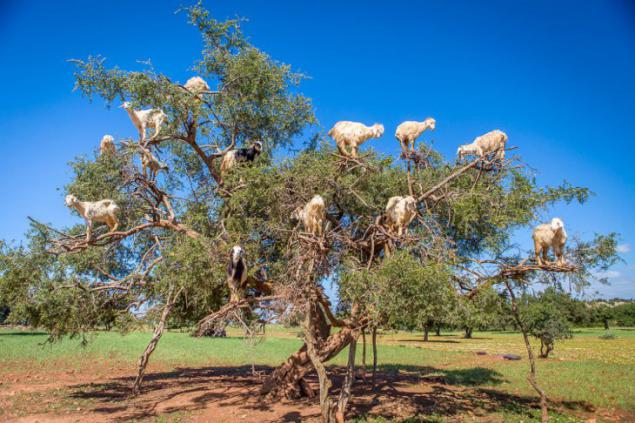
2. Grüner See (translated as "Green Lake") in Austria, with a clear and transparent emerald water constantly changes the depth and size. In winter, it dries to a large puddle, cover the bottom of only 1-2 meters.
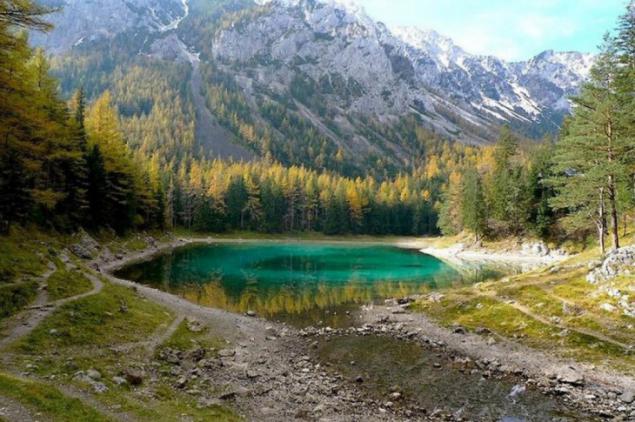
And in the summer because of the melting of snow in the surrounding mountains spreads and rises up to 12 meters, turning part of a recreational park with footpaths, walkways and benches in the likeness of the mysterious Atlantis.

3. Shadow "giant bear" strangely appears twice a year in the mountains of the US state of North Carolina, bringing a bunch of tourists in a local village Keshirs. From there it can be seen every day for 30 minutes starting at 5:30 pm, but only from late October to early November and mid-February to early March.

4. Aurora - one of the most magnificent sights on earth. From September to April it is often illuminates the sky in Alaska, Canada, Iceland, northern Scandinavia and, of course, in the northern regions of Russia. And here these kinds of Russian taiga battled even the most demanding audience.
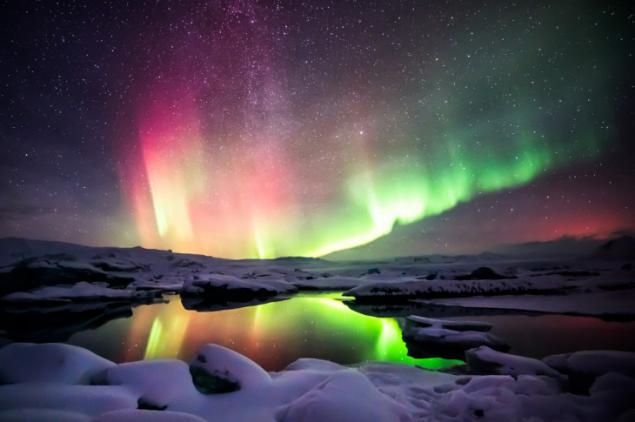
5. Bizarre trees, cocoons in Pakistan came after the terrible floods in 2010. Millions of spiders climbed up to them to escape the coming water, foliage and braided tight network web.

6. Hillier in the south-west of Australia - not only known Pink Lake (both are in Africa, we showed him among the most breath-taking places on earth). But Australian feature is that it preserves the color throughout the year, at all temperatures. Water remains in the bottle, even pink.
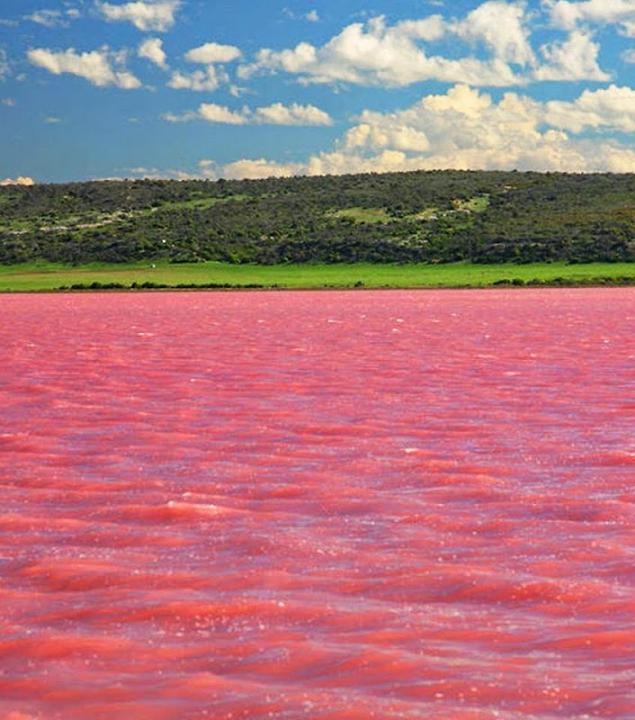
7. Here's a live underwater vortex raging along the coast of South Africa every year from May to July when millions of sardines dense swarms moved from the cold waters near Cape Cape Point to the northeast. Circled with this "carousel" attracts divers from around the world.
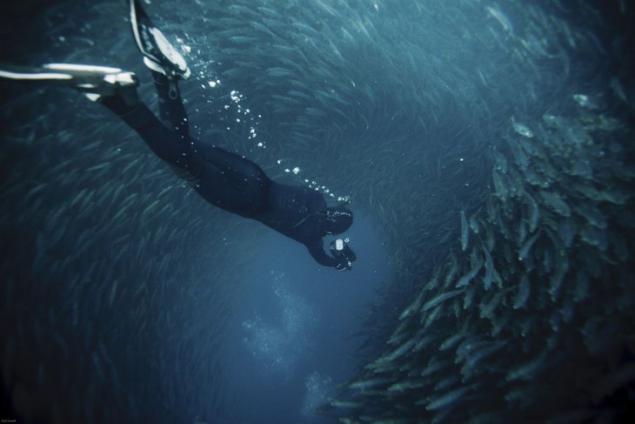
8. The river Caño Cristales in Colombia, it is usually in the first half of the year, is bright multicolored from June to December. It was then that the different species of algae under the influence of weather conditions take red, blue, yellow, orange and green shades. Locals call it the "River of five colors", tourists - "River rainbows».

9. The beach, which descended like a star, and fantastically glowing ocean can be seen in Puerto Rico or the Maldives, where the local unique algae - bioluminescent phytoplankton - are beginning to shimmer under the influx of the waves.
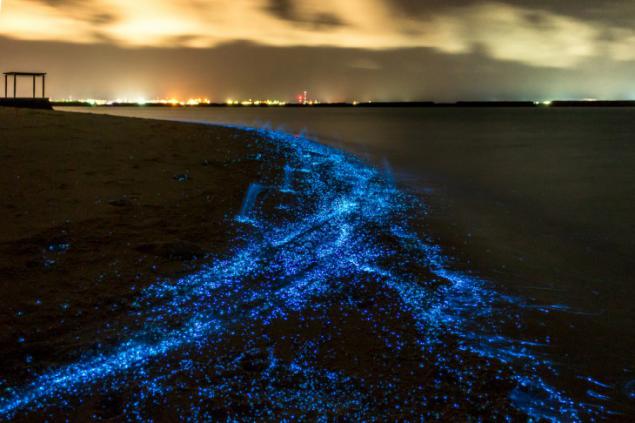
10. A huge cloud of bats rising summer nights over the center of Austin, capital of Texas and take a look at this presentation annually attracts thousands of tourists. About 1, 5 million bats live under the bridge at the Ann Richards Congress Avenue - the world's largest urban colony of bats! During the day they sleep, and the night time fly hunt insects, greatly facilitating the fight against agricultural pests. And they spend the winter in Mexico.
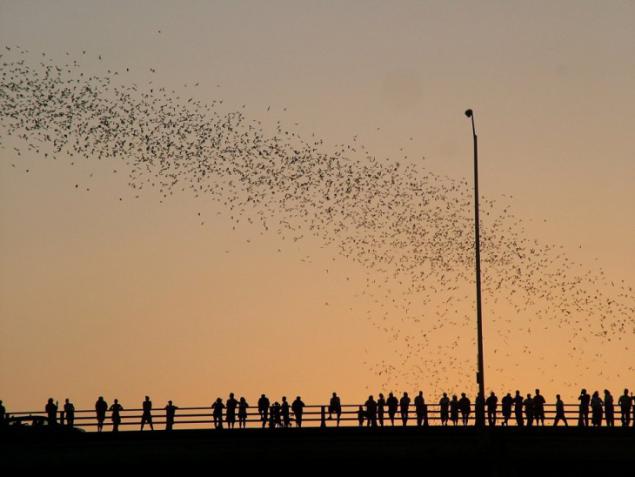
11. Ijen volcano in Indonesia, spewing streams of blue fire. This is due to combustion of sulfur dioxide with a temperature of 600 degrees Celsius.
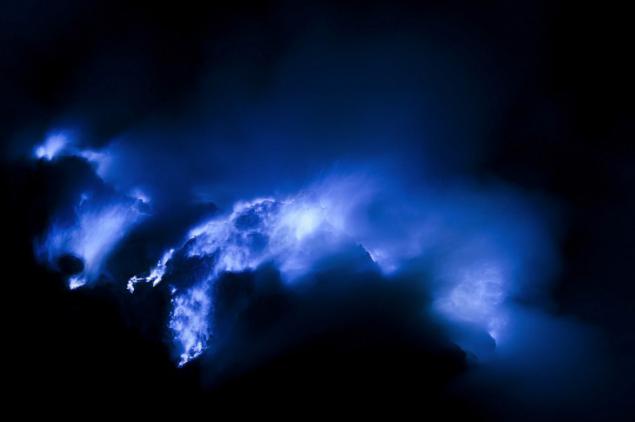
12. Sailing stones in the American Death Valley National Park in California. For years, they slowly move along the dry bottom of the lake Racetrack Playa, leaving a long trail. Scientists believe that they can "move" the ice that forms at night beneath a thin layer and then melts in the sun.

13. Svetlyachkovye Uaitomo cave - one of New Zealand's stunning sights. Just imagine: you are floating on a boat on the quiet lake under the dark vaults, thickly studded with turquoise "Constellation" fireflies.
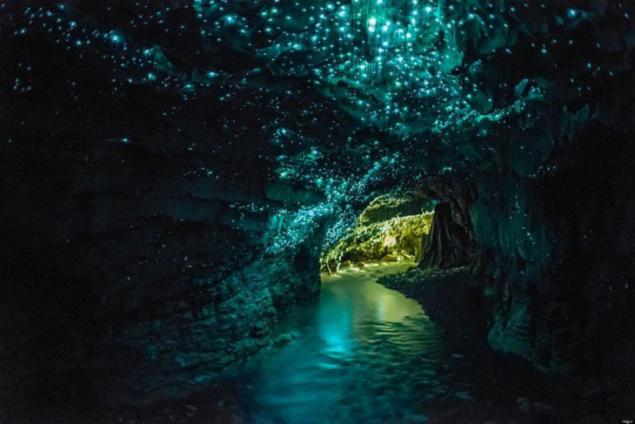
14. Reservoir Abraham in Canada with the most amazing ice patterns: its thickness is riddled with lots of frozen gas bubbles. In addition, rapid changes in water level creates unique surface cracks and ridges.
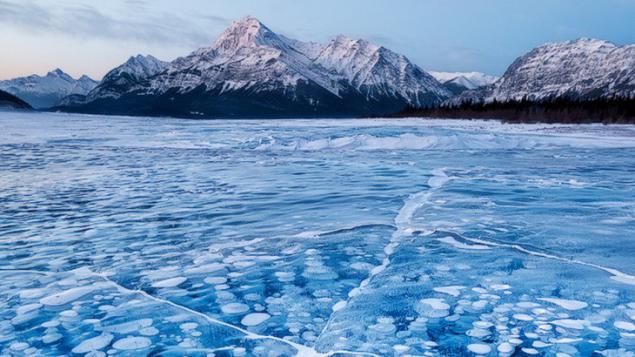
15. The massive "invasion" of crabs can be seen in November at Christmas Island in Australia. Approximately 120 million shellfish at this time to get out of the woods, where they live year-round, and right across the coastal road rush to the ocean to lay their eggs at high tide.
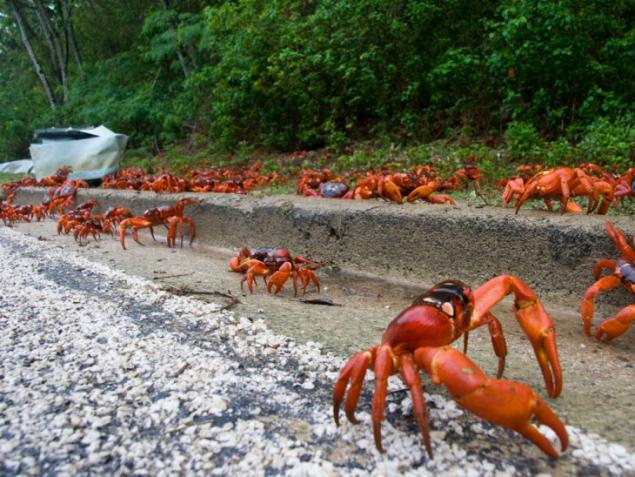
16. The so-called Eye of the Sahara, or Richat - geological formation with a diameter of 50 meters, which is the orbit and the truth is like a huge eye with iris and pupil looking to the cosmos. At one time it was a landmark for astronauts, because clearly stands out from the monotonous landscape of the African desert.
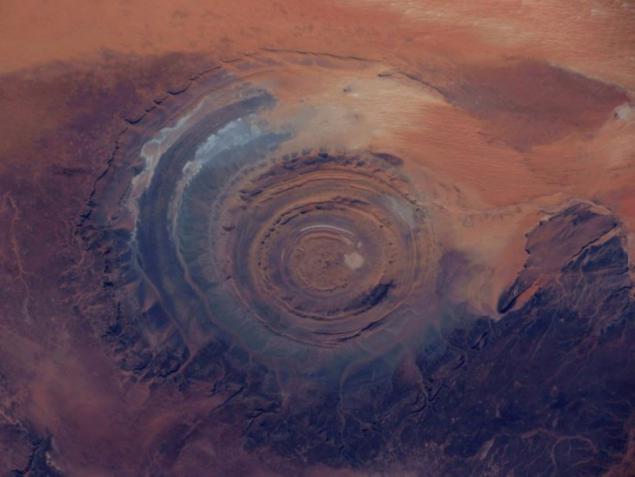
17. «fire rainbow" - a rare optical effect in the atmosphere when the sun's rays, located at a certain angle above the horizon, refracted in ice crystals in the clouds and are divided into range. It can only be seen from a height, such as the mountain.

18. The migration of butterflies - a unique phenomenon, which is every year in late October is observed in North America. The world's only type of "migratory" butterflies danadida monarch sent to winter in warmer climes, to California or Mexico, and at this time if the sky starts to sway, and crumbles bright orange spray.
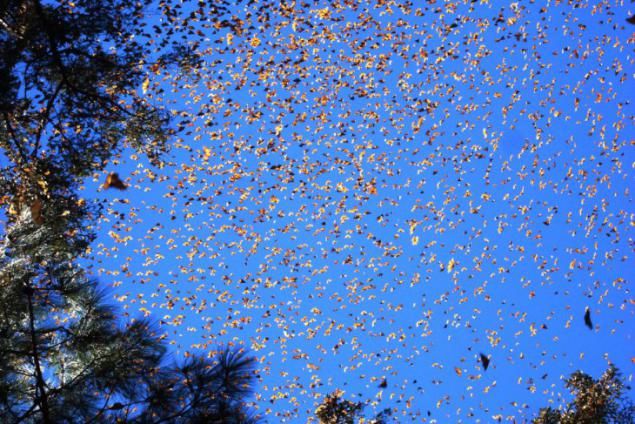
19. «Electrical» Lake Maracaibo in Venezuela, on which almost all year round in the night constantly lightning without thunder. Winds blowing from the Andes, causing storms, and methane that accumulates on these wetlands, rises to the clouds and feeds bits. The phenomenon is called the river, which flows into the lake, "Catatumbo lightning».
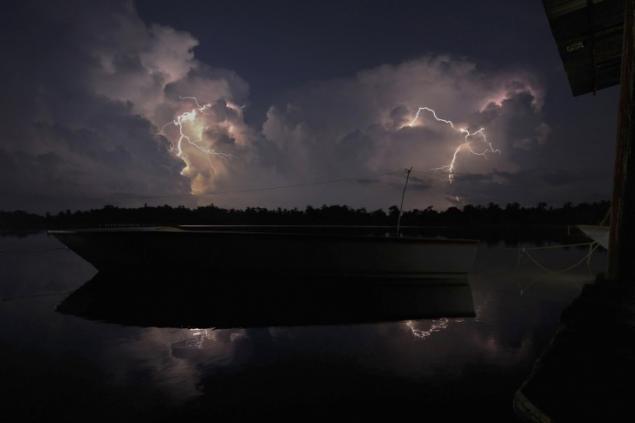
20. The rotating thunderstorm, or, scientifically, supersell ("super cell" translated from English) - the least common but most dangerous type of thunderstorms as the cold dry air collides with the warm rain. The idea is that such Virchow may arise anywhere in the world, but are most common in the Great Plains of the United States, the so-called Valley of Tornado. At a safe distance - incredibly fascinating spectacle.
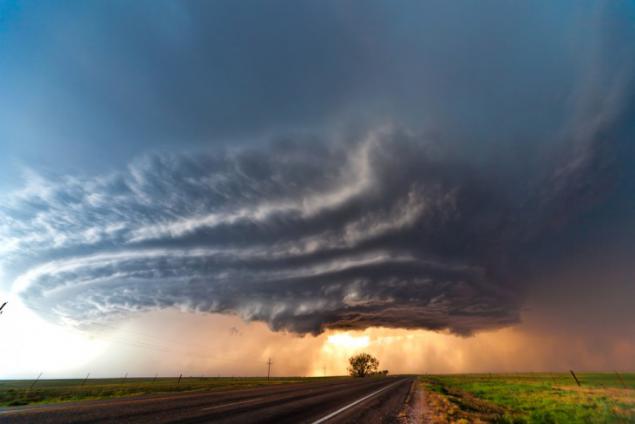
via www.anews.com/ru/post/28821873/

2. Grüner See (translated as "Green Lake") in Austria, with a clear and transparent emerald water constantly changes the depth and size. In winter, it dries to a large puddle, cover the bottom of only 1-2 meters.

And in the summer because of the melting of snow in the surrounding mountains spreads and rises up to 12 meters, turning part of a recreational park with footpaths, walkways and benches in the likeness of the mysterious Atlantis.

3. Shadow "giant bear" strangely appears twice a year in the mountains of the US state of North Carolina, bringing a bunch of tourists in a local village Keshirs. From there it can be seen every day for 30 minutes starting at 5:30 pm, but only from late October to early November and mid-February to early March.

4. Aurora - one of the most magnificent sights on earth. From September to April it is often illuminates the sky in Alaska, Canada, Iceland, northern Scandinavia and, of course, in the northern regions of Russia. And here these kinds of Russian taiga battled even the most demanding audience.

5. Bizarre trees, cocoons in Pakistan came after the terrible floods in 2010. Millions of spiders climbed up to them to escape the coming water, foliage and braided tight network web.

6. Hillier in the south-west of Australia - not only known Pink Lake (both are in Africa, we showed him among the most breath-taking places on earth). But Australian feature is that it preserves the color throughout the year, at all temperatures. Water remains in the bottle, even pink.

7. Here's a live underwater vortex raging along the coast of South Africa every year from May to July when millions of sardines dense swarms moved from the cold waters near Cape Cape Point to the northeast. Circled with this "carousel" attracts divers from around the world.

8. The river Caño Cristales in Colombia, it is usually in the first half of the year, is bright multicolored from June to December. It was then that the different species of algae under the influence of weather conditions take red, blue, yellow, orange and green shades. Locals call it the "River of five colors", tourists - "River rainbows».

9. The beach, which descended like a star, and fantastically glowing ocean can be seen in Puerto Rico or the Maldives, where the local unique algae - bioluminescent phytoplankton - are beginning to shimmer under the influx of the waves.

10. A huge cloud of bats rising summer nights over the center of Austin, capital of Texas and take a look at this presentation annually attracts thousands of tourists. About 1, 5 million bats live under the bridge at the Ann Richards Congress Avenue - the world's largest urban colony of bats! During the day they sleep, and the night time fly hunt insects, greatly facilitating the fight against agricultural pests. And they spend the winter in Mexico.

11. Ijen volcano in Indonesia, spewing streams of blue fire. This is due to combustion of sulfur dioxide with a temperature of 600 degrees Celsius.

12. Sailing stones in the American Death Valley National Park in California. For years, they slowly move along the dry bottom of the lake Racetrack Playa, leaving a long trail. Scientists believe that they can "move" the ice that forms at night beneath a thin layer and then melts in the sun.

13. Svetlyachkovye Uaitomo cave - one of New Zealand's stunning sights. Just imagine: you are floating on a boat on the quiet lake under the dark vaults, thickly studded with turquoise "Constellation" fireflies.

14. Reservoir Abraham in Canada with the most amazing ice patterns: its thickness is riddled with lots of frozen gas bubbles. In addition, rapid changes in water level creates unique surface cracks and ridges.

15. The massive "invasion" of crabs can be seen in November at Christmas Island in Australia. Approximately 120 million shellfish at this time to get out of the woods, where they live year-round, and right across the coastal road rush to the ocean to lay their eggs at high tide.

16. The so-called Eye of the Sahara, or Richat - geological formation with a diameter of 50 meters, which is the orbit and the truth is like a huge eye with iris and pupil looking to the cosmos. At one time it was a landmark for astronauts, because clearly stands out from the monotonous landscape of the African desert.

17. «fire rainbow" - a rare optical effect in the atmosphere when the sun's rays, located at a certain angle above the horizon, refracted in ice crystals in the clouds and are divided into range. It can only be seen from a height, such as the mountain.

18. The migration of butterflies - a unique phenomenon, which is every year in late October is observed in North America. The world's only type of "migratory" butterflies danadida monarch sent to winter in warmer climes, to California or Mexico, and at this time if the sky starts to sway, and crumbles bright orange spray.

19. «Electrical» Lake Maracaibo in Venezuela, on which almost all year round in the night constantly lightning without thunder. Winds blowing from the Andes, causing storms, and methane that accumulates on these wetlands, rises to the clouds and feeds bits. The phenomenon is called the river, which flows into the lake, "Catatumbo lightning».

20. The rotating thunderstorm, or, scientifically, supersell ("super cell" translated from English) - the least common but most dangerous type of thunderstorms as the cold dry air collides with the warm rain. The idea is that such Virchow may arise anywhere in the world, but are most common in the Great Plains of the United States, the so-called Valley of Tornado. At a safe distance - incredibly fascinating spectacle.

via www.anews.com/ru/post/28821873/
15 facts that ordinary Japanese people think about Russia and Russian
7 facts about the longevity of those who lived to be 100
